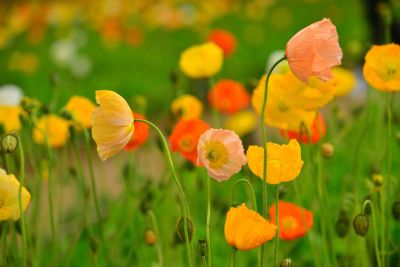Iceland poppy flowers attract birds, butterflies and bees. The flowers of the Iceland poppy plant are usually orange and reach 2 feet (60 cm.) in height and the same in spread. Colors of white, yellow and red are available in more than 80 varieties of the Iceland poppy flower, as are varying heights. Don’t be deterred from planting this beautiful, easy-care bloom out of fear that it is illegal. The opium poppy (Papaver somniferum) variety is the only one that is forbidden from cultivation in most areas.
How to Grow an Iceland Poppy
Plant seeds of the Iceland poppy plant in fall. Seed directly into the flower bed that will be the permanent location of the Iceland poppy flower, as the plants do not transplant well. If you wish to start seeds indoors, use biodegradable cups that can be planted right into the bed. There is no need to cover the seeds; the Iceland poppy plant needs light to germinate in spring. Mark the area, if necessary, so you don’t mistake the spring foliage for a weed. Grow the Iceland poppy flower in a full sun area. Soil for the Iceland poppy plant should be light and well drained.
Iceland Poppy Care
Iceland poppy care includes a onetime feeding in spring with a general purpose fertilizer. Other Iceland poppy care involves the deadheading of spent blooms for more of the cup-shaped flowers to appear. You should also water infrequently during times of limited rainfall. Now that you’ve learned how to grow an Iceland poppy, be sure to plant some seeds in fall in a sunny area, around the same time you’re planting flower bulbs. Plant them in masses for showy blooms. The Iceland poppy flower is a great companion to other spring blooming plants.
